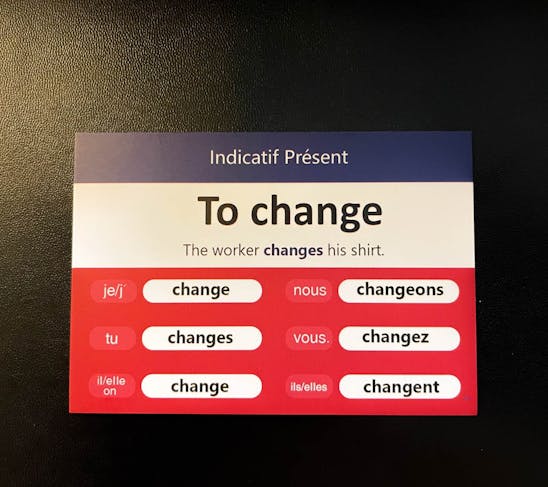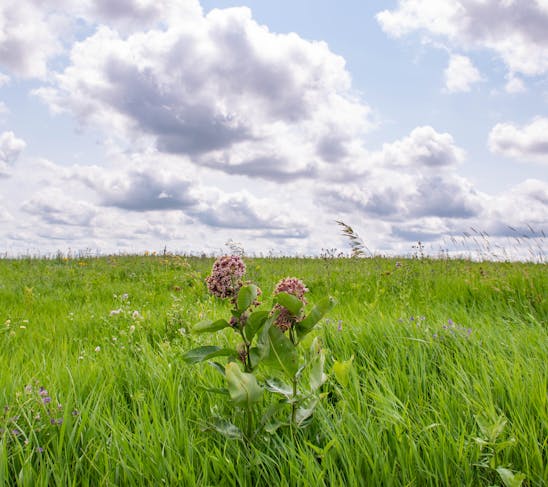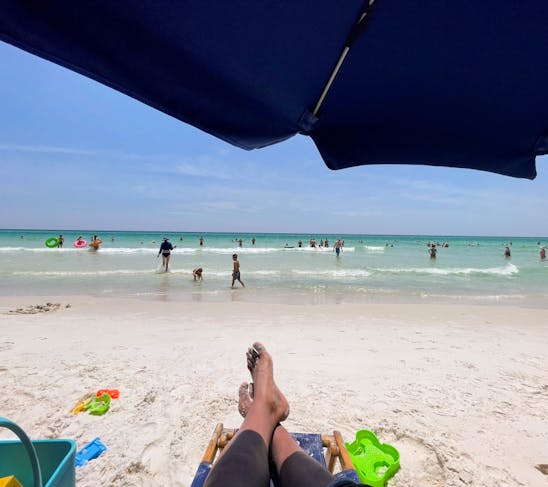It’s 3:30 p.m. on Sunday, June 7, 2015, and I can hear the calls of the scarlet macaws outside. I have less than two and a half hours of sunlight remaining, so it’s important that I stay focused and write. I need to conserve as much sunlight as I can, because once 6:00 p.m. comes around, everything becomes more difficult in the dark, not to mention it’s been raining more and more here lately, and any type of light makes you a target for insects both small and large.
Nevertheless, the macaws don’t seem to mind. For the most part, they just chill—unless, of course, they’re screaming through the air with their screaming red, blue and yellow feathers highlighted against the white and cloudy sky. I just finished charging my laptop, so it’s time to move back outside and eavesdrop on their conversation. I’m interested in learning more of their story. We all have one, animals included, and my story and theirs happened to coincide on Friday, June 5, in Corcovado National Park.
Andrey and I pressed forward, trudging through the sand for another two or three miles. We had trekked more than nine miles total, and the sun was mercilessly bearing down upon us. The coastline was quickly disappearing, and we eventually made our way back into the dense forest. I lowered my shades. Scanned the area in front of me. Then, looked up at the treetops, searching for any sign of movement.
I had given up on seeing a jaguar long before I arrived. They are too stealthy. Too shy. Too spread out across the vast Corcovado that seeing one is nearly next to impossible. As for the puma, however, Andrey said he encounters a few each month on his tours, and we were now approaching the area where he had seen one last.

The trees were bigger and wider, the canopy thicker. Towering figs with sprawling roots that looked like a giant’s hand clung to the jungle floor. Watch your step! The sharp rocks and tangled floor provided just as many dangers as those running around with teeth or claws.
In front of us was the guide we had eaten lunch with a few hours earlier. His finger was lifted over his mouth, signaling our silence. Foraging for figs less than 30 yards away was a massive male tapir—a large beast with an even larger snout. Tapirs have a prehistoric lineage, and somewhere down their family line are related to the rhinoceros. From what I hear, they are relatively calm animals with a vegetarian diet, so I felt comfortable moving closer, although not too close.
If you have ever watched Mel Gibson’s Apocalypto, you remember the opening scene where the tapir is being chased through the jungle. Branches and bones can snap like twigs when a tapir is running in a full sprint. It’s not an animal you want to be trampled by, so we continued on our way, another worthwhile animal knocked off my imaginary checklist.
A little further, the treetops began to sway from side to side. I knew it was too humid for a breeze to survive that far inside the jungle, especially without a rainstorm brewing above. If there was movement, then you can chalk it up to some kind of animal activity. I looked up. More monkeys. Down below, a pack of 15 coatis, short for “coatimundi,” members of the raccoon family, used their long snout to sniff their way toward their next meal less than 10 yards away from us.
In between animal sightings, Andrey filled the time by sharing the medicinal secrets of more plants, and I too often found myself pulling out my iPhone from my Fannie pack to take notes. “Un momento,” I would say to him each time I needed to jot down something important. The more notes, the less research I would have to do later when writing Maven’s story.

We finally reached the Claro (Clear) River, our last obstacle prior to arriving at Sirena Ranger Station, located approximately 10 miles from Leona Ranger Station and 12.5 miles from where our trek first began back on Carate Beach. Andrey quickly pointed out the 10-foot crocodile at the edge of the river, its mouth open, resting…waiting.
I kept a safe distance and realized we would have to cross. Thankfully, the river was at low tide, and there was a narrow section maybe 15 yards wide that looked ideal. The water was knee deep, so Andrey removed his black-rubber boots and cautiously waded bare foot across the river. I, on the other hand, was already soaking wet from sweat and was less concerned with wet feet than I was about getting to the other side as quickly as possible.
The river banks quickly faded into a new stretch of forest, and I asked Andrey if I should be concerned with a crocodile popping out by surprise. He assured me we were fine, but moving through the high grass made my unease no less real. I’m simply not a fan of crocodiles. There’s a reason why they’ve been around since the dinosaur age. My trepidation finally subsided when the bright green grass of a manicured runway appeared, and I saw Sirena Ranger Station several hundred yards away.
It was only 2:30 p.m. when we arrived and there was still a few more hours of daylight left, so I asked Andrey if he would take me on one of the trails surrounding the station. He graciously agreed, so we took a quick breather, replenished our water reserves, left behind the bags that had been weighing us down and took a looped trail in the direction of the Sirena River.

The light was lower. The ground slicker. Andrey turned toward me and muttered a few instructions, but just as he finished, he suddenly and unexpectedly raised his leg. What appeared to be a branch on the ground was actually a six-foot bird-eating snake slithering around in front of us. Its name is derived from the bird eggs it favors in its diet, and can actually inflate part of its upper body with air to make itself look bigger. Although not lethal, the beige-colored serpent’s surprise appearance made me jump back.
It was the longest snake I had ever seen, so I was naturally hesitant to take a picture, but Andrey reassured me that all was well, so I fed my narcissistic desire and feigned a smile, all the while knowing that my personal fright levels had just ratcheted up a notch. Those fears were even more apparent less than 50 yards further down the trail when Andrey noticed something curious resting in a tree branch. It was an eyelash pit viper. Though much smaller than the bird snake, it only takes a small portion of venom to kill you.
Even when I was staring directly at it, the stealthy snake was still difficult for me to see. Pit vipers are ambush predators that use their colors masterfully to camouflage their bodies. Before we arrived at Sirena, most of my scanning occurred high up in the tree tops. That mentality changed after seeing those snakes. Immediately, I was less interested in spotting a cat and more interested in making sure I knew exactly where I was stepping or grabbing. No vine or tree branch would be under scrutinized again.
I was on a heightened sense of alert when Andrey stopped again. I asked him what was wrong. “Onions,” he said. I remembered what he had told me earlier about the peccaries: that I would smell them before I saw them. I was already a little on edge. The last thing I needed was for a pack of peccaries to force me into a tree with God-knows-what, so I moved closer to Andrey, providing him with an unwanted second shadow.

We crossed murky creeks up to our shins. Ducked and weaved through jungle vines until we heard the familiar sound of the ocean. The rising tide of the Pacific was merging with the Sirena River, and soon enough, crocodiles and bull sharks would roam its waters all too freely, cutting Sirena Ranger Station off on one side, while the Claro River did the same on the opposite.
Before I left the States, I remember telling a few friends about my upcoming trip to Corcovado. I explained the types of animals I may encounter and the very real dangers that would be present. Some said I probably wouldn’t see anything and that I had nothing to worry about. After all, even I know my imagination can sometimes get the best of me. But there is no death by imagination when you enter Corcovado. Venomous snakes and large, hungry animals have a way of putting things into perspective real quick, but fortunately for me, my first day in the jungle was safely coming to a close.
We could see and hear a storm blowing in, so Andrey and I decided to make our way back to the station. The light continued to fade, but the bright green runway was still visible in front of us. The rain came down stronger and harder. I pulled my shirt over my Fannie Pack to shield the camera inside until we were finally safe and sound underneath the covered roof of the station.
Andrey then escorted me to an open-aired platform and dropped two twin foam “mattresses” to the floor. I retrieved my bed sheet and mosquito net from my bag, both of which I learned were a little undersized. But Andrey had an extra sheet, so I simply made do with what was available.
I grabbed my soap from a Ziploc bag, peeled off my soaking wet clothes and headed over to the sinks to wash them, which I later hung on the line next to my sleeping mat. After a quick shower, I headed to the station’s small cafeteria for dinner. It was worth paying the $25 that the station charges for meals. The last thing I wanted to do after a long day’s hike was cook. We ate pork chops, baked potatoes, rice and beans…always rice and beans. It was exactly what I needed.

We could hear the rain slamming against the roof of the station. When it was all said and done, it would turn out to be the largest rainfall so far: almost three inches. After dinner, we played an impromptu game of charades with some of the other hikers. If we were all going to be trapped behind a curtain of rain deep inside the jungle, we might as well have some fun before the lights went out at 8:00 p.m. It was my turn to choose a movie title. I whispered it into the ear of the person whose turn it was to act.
She knelt on the ground and made a big chomping motion with her arms. Someone yelled, “Crocodile.” A few guesses later, another voice added the second word, “Dundee.” Little did I know the title would be a foreshadowing of what was to come the next morning…
Follow me on Instagram at @Joshua_Maven or @HonchotheVan, on Twitter @MaventheRaven or Facebook at Facebook/TheLastImperial.
Pura Vida
Midlife Revival
It’s Friday, July 11, 2025, and I just completed my second French lesson of the week. I’ve been working with an online tutor for the past six months in hopes of communicating with my 22-month-old son as he advances in his mother’s native tongue. I’ll be honest, learning a new language has proven quite the challenge. My tutor insists that I’m making progress, but it rarely feels that way to me.

Postcards to Samuel
It's 8:00 p.m. on Wednesday, July 31, 2024, and I'm trying something a little different with this post. Instead of my usual blog format, I compiled a series of postcards that I wrote to my 10-month-old son, Samuel, during a two-week road trip I recently took to the Great Lakes. I plan to give him these postcards, along with others from future trips, when he's older in hopes that they will inspire him to chase his own dreams, whatever those might be.

False Summit
It’s 12:00 p.m. on Sunday, July 30, 2023, and I’m lounging at the beach enjoying the white sands and green waters of Florida’s Emerald Coast. Today is my 40th birthday and a relaxing getaway is exactly what I needed after a two-week road trip out west, where I hiked the highest peaks of Colorado and Arizona. The reasoning behind my latest excursion was simple: if I’m going to be “over the hill,” then I might as well be standing on top of a mountain.

